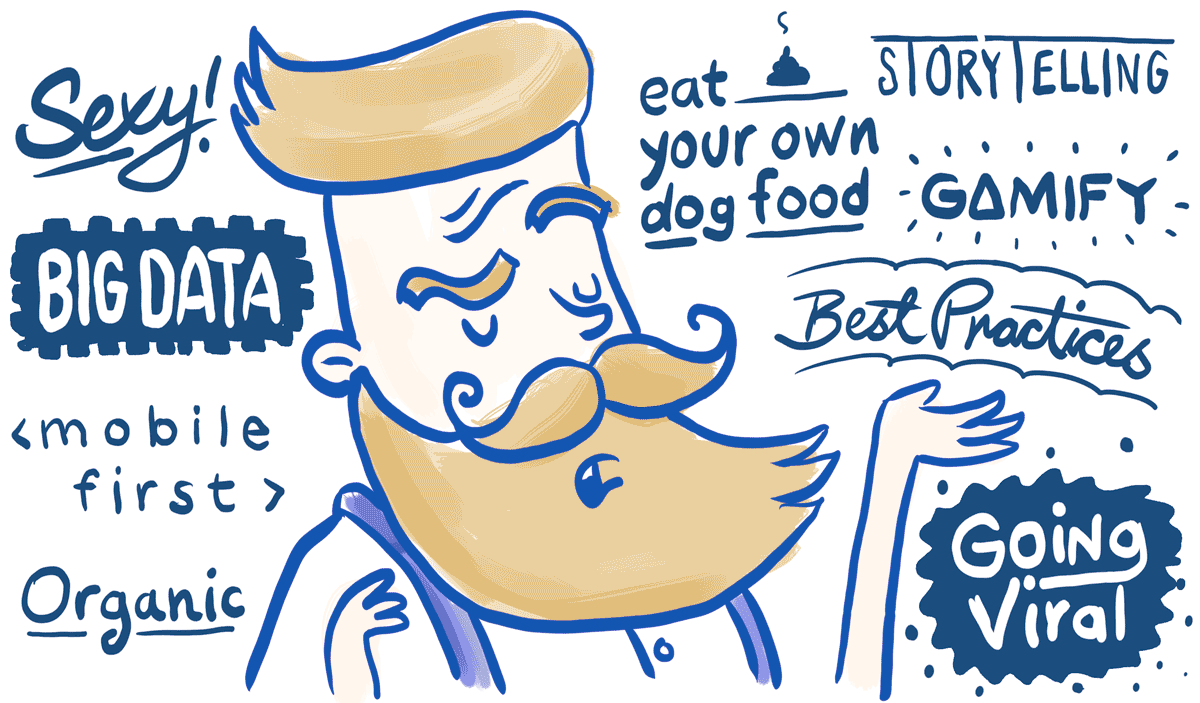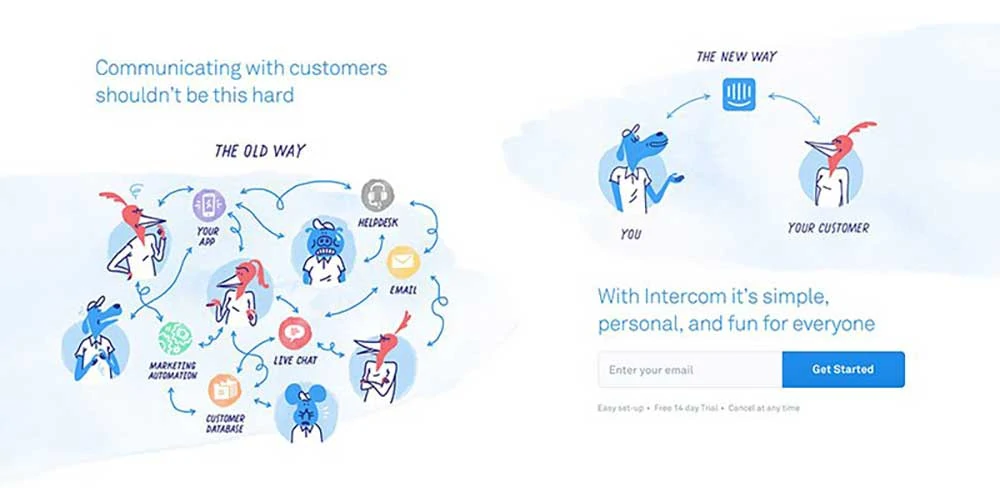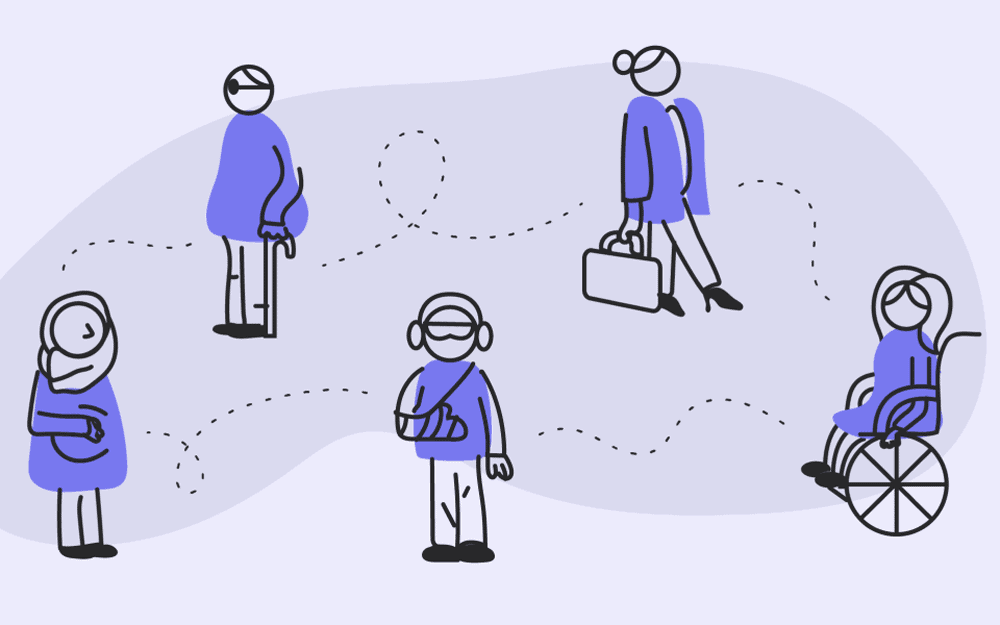8 Growing Areas of Innovations in UX & UI Design
User experience (UX) and user interface (UI) design constantly evolve as new technologies emerge. In the past few years, we have seen immense growth and innovation in the tools and techniques available to UX/UI designers. This rapid pace of change is welcomed, as delivering an intuitive, seamless user experience is more critical than ever.
Recent research shows that 88% of customers will not return to a website or app if they have a poor user experience, costing companies valuable business. With such high stakes, it's no wonder that UX/UI design has become a top priority across industries. Companies heavily invest in design resources and the latest technologies to stand out from competitors and convert and retain customers.
In 2023, the possibilities are endless for innovations in UX and UI design. Some significant areas of innovation include voice user interfaces, augmented/virtual reality, and gesture-based interactions. Designers can now access incredibly sophisticated prototyping and animation tools to test concepts quickly and build highly polished end products. The proliferation of mobile devices has also led to significant advancements in responsive design capabilities.
These new technologies and design approaches empower UX/UI designers to create intuitive, personalised experiences that meet diverse user needs and preferences. While the fast pace of change presents challenges, it also creates exciting opportunities for innovation. Companies that leverage the latest UX/UI trends and tools will have a competitive advantage in delivering next-generation digital experiences that turn visitors into loyal, satisfied customers.
Innovations in UX & UI Design
1 – Animated illustrations

Animated illustrations are becoming increasingly popular and vital in UI design in the digital age. Animations and visual effects in product interfaces help draw users' attention, make experiences more engaging, and communicate information and meaning intuitively.
The use of animated illustrations in UI design has increased in recent years with the proliferation of digital products and services. Vivid animated graphics are now commonplace in mobile apps, websites, advertising, social media, and more. For example, you'll often see animated 2D or 3D graphics used in social media posts to capture attention quickly. Complex 3D animations are frequently used in digital advertisements and experiential websites to immerse users and tell compelling visual stories.
Animated illustrations can be highly effective when thoughtfully incorporated into UI design, but there are essential principles to keep in mind:
- The animations should be meaningful and functional, not just flashy extra decorations. They should enhance users' understanding and experience.
- Use animations judiciously. Too many on one interface can feel overwhelming and distracting. Carefully choose where animations offer the most value.
- Check that the speed and timing of animations feel natural. The animations will not have the intended effect if they are too fast or slow.
- The motion design should complement your product's visual language and brand identity.
- Animations should be universally clear and unobtrusive. Avoid animations that could cause seizures or other issues for users.
By applying these principles, animated illustrations can be a powerful way to create dynamic, engaging UI experiences that thoughtfully guide users and add delight. The potent visual language of animation opens up exciting possibilities for communicative, user-centred design. Just be sure not to go overboard with animated graphics for the sake of it—let purposeful design guide your use of animation.
2 – Augmented reality
Augmented reality (AR) is an emerging technology rapidly developing and attracting significant investments from innovative companies across industries. AR overlays digital information and images onto the real world, creating an enhanced, interactive experience for the user.
Some critical capabilities of AR include:
- It displays 3D computer-generated objects and animations that appear in the real world. The digital elements can interact with the environment and respond to user actions.
- They provide supplemental information about real-world objects and locations. For example, an AR app can identify a building and overlay its information.
- It enhances natural environments with digital sound, haptics (touch feedback), and simulated smell. This creates a highly immersive experience.
- They enable shared AR experiences between multiple users simultaneously. They can interact with the same virtual objects and environments.
AR has strong potential across gaming, education, healthcare, engineering, and retail sectors. One fun and viral example of AR technology was a prank campaign by Pepsi Max at a bus stop in London. The AR-enabled bus stop displayed shocking fictional scenarios like meteors crashing down, tigers prowling around, and alien tentacles grabbing at bystanders. This gave commuters a thrilling and shareable AR experience highlighting the creative potential of the tech.
AR hardware, software, and connectivity continue improving, so AR is poised to become a central computing platform. Tech giants like Apple, Google, Microsoft, and Facebook invest heavily in AR. The possibilities span from practical everyday apps to imaginative new ways to play, learn, shop, and more. The Pepsi Max bus stop prank showed how AR can surprise and delight people cleverly when content creators use it.
3 – Neumorphism

Neumorphism is an evolution of skeuomorphism, a design approach that uses familiar, real-world concepts to represent digital elements. While skeuomorphism attempts to mimic the physical world, neumorphism takes a more subtle approach by using light and shadows to make interface elements appear three-dimensional and lifelike.
The fundamental techniques used in neumorphic design include:
- Gradients – Subtle colour gradations are applied to interface elements like buttons and menus to give the illusion of depth and contours. The gradients create highlights and shadows that make the parts appear to curve or protrude from the screen.
- Soft Shadows – Unlike the harsh drop shadows used in skeuomorphism, neumorphic shadows are diffused and blurred to look more natural. The soft shades create the impression that the interface elements have accurate thickness and exist in 3D space.
- Background Blurring – The background behind neumorphic elements is often blurred to enhance the sense of depth further. This helps make the foreground elements look detached and elevated above the background plane.
- Organic Shapes – Neumorphic shapes tend to be rounded and smooth rather than the rigid geometric shapes of flat design. The curved corners and edges reinforce the natural, lifelike aesthetic.
Neumorphism shines in the design of buttons. Rather than laying a button flat on the background, neumorphic buttons appear to sit inside and protrude from the screen. The combination of light and shadows gives the impression that you could press or touch the button. This creates a more tangible and intuitive interaction for the user.
Neumorphism allows designers to make digital interfaces feel more natural and realistic. By evoking physicality and real-world depth through lighting and shadows, it creates a visual style that is both visually refined and inherently intuitive. Neumorphism brings interfaces to life without going to the extreme of total skeuomorphic realism.
4 – Storytelling

The power of storytelling in UI/UX design is genuinely limitless. Crafting compelling narratives allows designers to forge deep emotional connections with users, convey brand values in an impactful way, and create engaging user experiences that keep people coming back.
A compelling story woven into the UI/UX gives users context, builds empathy, and draws them into the product experience. The right story on a website landing page can immediately convey what a brand is all about and what makes it unique. Through thoughtful copywriting and strategic visuals like high-quality photos, illustrations, and intentional colour schemes, designers can relate to users on a personal level and build rapport.
Storytelling turns static designs into immersive experiences that feel almost human. When done well, users stop seeing interfaces as mere collections of buttons and menus; instead, they see an intuitive flow guided by narrative. This emotional investment pays dividends in user retention, satisfaction, and loyalty.
Storytelling also makes abstract concepts, large amounts of information, and complex ideas easier to digest. Designers can leverage the power of stories to simplify workflows, explain new features, ease users through tutorials and onboarding, and generally make the user experience more accessible.
For UI/UX designers, storytelling is an invaluable tool. Leveraging compelling narratives allows them to build connections, shape perceptions, enhance usability, and drive growth. When harnessed effectively, the storytelling power of UI/UX can elevate products from good to great.
5 – Inclusive design

The concept of inclusive design rejects the notion that there is a typical user. Every person interacts with products and digital interfaces uniquely based on their circumstances. Factors like a user's environment, age, race, gender, abilities, and more, shape how they experience designs.
With inclusive design, the goal is to create products, services, and digital experiences that work well for the broadest possible range of user identities. It aims to be accessible, ethical, and equitable.
Inclusive design benefits users by removing barriers and allowing more people to successfully use a product or access information online. It also helps companies reach broader audiences and avoid excluding potential customers.
Implementing inclusive design starts early and continues through each stage of the design process. Here are some tips:
- Conduct user research on diverse groups to understand needs. Don't make assumptions.
- Co-design with users with different abilities and backgrounds.
- Focus on users' lived experiences over data and metrics alone.
- Consider uncommon uses for your product or site beyond the primary use case.
- Allow for flexibility and choice in how users interact with your product or access information.
- Choose fonts and colours carefully by testing for readability and accessibility.
- Evaluate and iterate to improve the experience for underserved groups over time.
L'Oreal's Le Teint Particulier custom foundation is an example of inclusive design done well. The process uses a device to scan a customer's skin and precisely match their tone from over 20,000 foundation combinations. This allows for an inclusive experience that works for diverse skin tones.
The benefits of inclusive design are immense. By considering the needs of marginalised or overlooked users, we can create products, services and digital experiences that work for as many people as possible. This makes a more ethical, accessible, and ultimately better experience for all.
6 – Virtual reality

Virtual reality technology has expanded far beyond its initial applications in the gaming industry. Even marketing, advertisement, and virtual reality safety training software like Pixaera can share this pie today. The unique immersive experience of VR provides new opportunities for engagement that go beyond what is possible with traditional mediums.
The user experience principles that apply to VR differ from other mediums, given the sense of presence and agency users feel when immersed in a virtual environment. VR experiences must be designed to avoid motion sickness, provide intuitive controls, and create believable interactions between users and virtual objects.
One of the leading providers of consumer VR technology is Oculus Rift, owned by Meta. The Oculus Rift headset displays stereo images that make users feel inside a virtual 3D world. Oculus Rift headsets come with controllers that allow users to interact with virtual objects using natural movement. This creates an incredibly immersive experience for gaming but also shows promise for marketing, training simulations, virtual tourism, and more.
For example, some brands have created interactive VR experiences to showcase products or memorably engage potential customers. Marriott has used VR to let people experience virtual tours of vacation properties. The immersive nature of VR technology makes it well-suited for creating engaging marketing and advertising applications. As VR adoption increases, we will likely see more and more brands explore how they can leverage VR to connect with consumers.
7 – Data integration

User experience design has evolved beyond utilising a designer's creativity or thoughtfully selecting colour palettes. Nowadays, data plays a crucial role in creating exceptional user experiences. Rather than only gathering and storing data to incrementally improve UX, designers can harness data to build algorithms that provide a competitive edge and elevate UX design.
A prime example of this is Uber, now the largest taxi company in the world. Yet they do not own any taxis themselves. Uber's success stems from algorithms that efficiently connect passengers to drivers. This algorithm-driven model has allowed them to scale rapidly.
Another impressive use of algorithms is by the Associated Press news agency. They leverage algorithms to generate over 2,000 financial reports every single minute automatically. The algorithms pull data from financial filings and earnings reports and automatically compile them into news articles. This allows AP to rapidly produce high-quality financial reporting at a pace a human could never match.
The key takeaway is that data and algorithms are now central to user experience design. Savvy UX designers use more than just data for incremental optimisations. They find ways to build algorithms that provide a true competitive advantage and create user experiences that are responsive, personalised, and intelligent. Uber and AP demonstrate how creative algorithm design can transform entire industries.
8 – Computational design
As a designer, it's natural to want to rely solely on your own experience and intuition when developing solutions. After all, you've spent years honing your skills and developing an eye for good design. However, in today's data-driven world, computational design can make the design process more efficient and effective.
Computational design leverages algorithms, data, and computing power to augment the traditional creative process. Whether you're designing digital products, architecture, art, or anything else, computational design tools have become incredibly powerful and helpful. These tools can help you iterate faster, test concepts digitally, and even generate novel design solutions you may have yet to consider.
A key advantage of computational design is that it allows the computer to understand context, make predictions, and take actions before the designer has completed their input. A great example of this is Google Search. As you start typing a query, Google generates relevant predictions and search results based on the first word or two. This eliminates the need to articulate what you're searching for entirely.
The applications of computational design are vast. The architecture allows designers to optimise sustainability, lighting, acoustics, and more. In product design, it enables rapid prototyping and user testing. And in fields like animation and industrial design, it opens up new creative possibilities.
While computational design does not replace human creativity and judgment, it enhances the design process. By embracing these tools, designers can create innovative solutions across every domain. The future of design is undeniably computational.
Final words
It is an ever-evolving field, with innovations in UX and UI emerging constantly to enhance user experiences and streamline workflows. Some other notable areas of recent UX/UI design innovation include:
- Voice user interfaces – Voice UIs like Amazon Alexa and Google Assistant allow users to interact with systems hands-free using natural language. This opens new possibilities for UX in situations where screens are impractical. Voice UIs still have challenges to overcome, but the options are promising.
- Augmented and virtual reality – AR and VR present new UI possibilities by blending digital elements into the user's physical environment. Designers must think spatially and creatively for these immersive new platforms. Applications span entertainment, training, healthcare, and more.
- Smart devices and IoT – Connected smart devices, appliances and wearables open new possibilities for ambient, omnichannel experiences. UX design must evolve to serve these ecosystems of physical-digital experiences.
- AI and personalisation – Sophisticated AI allows for more personalised, context-aware UX that dynamically adapts to each user. UX designers must consider how to account for AI capabilities in UX flows.
- New input methods – Inputs like touch, gesture and voice control open new options beyond the keyboard and mouse. UX design must account for these technologies' capabilities and limitations.
The field will continue rapidly innovating. Flexibility, curiosity and a user-focused mindset are essential for UX/UI designers to keep pace with emerging trends. Readers, what other areas of innovations in UX or UI innovation excite you? Let us know in the comments.
